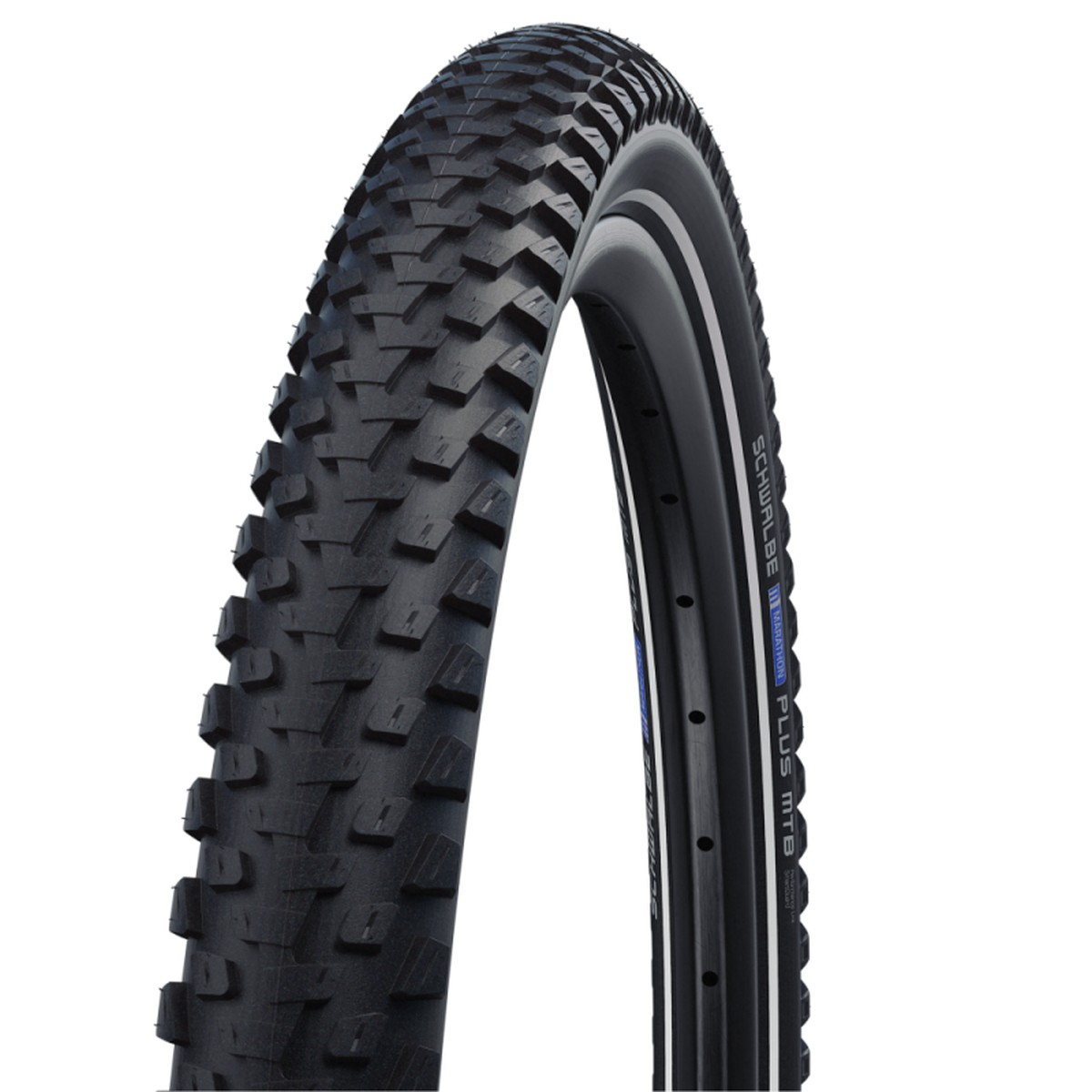MTB
Mountain bike tyres in 26" and 29"
MTB tyres for every intended use - whether for cross country, enduro and freeride use or for roller trainers and city rides
Depending on the intended use, ground and weather, you should use the right tyre for mountain biking to influence traction, control and braking behaviour optimally. Soft and wet ground requires tyres with rough studs. Stretches with frequently changing ground and asphalt sections require tyres with continuous straps in the middle of them, in order to ensure least rolling resistance on asphalt surface at high speed. Choose the right tyre for your bike from numerous types of tyres here.
Do you have questions about MTB tyres?
From fast cross-country tyres to biting enduro tyres – besides the tyre width, MTB tyres differ in three main points:
- Tread: The number, shape and arrangement of the knobs influence grip, riding behaviour and self-cleaning properties.
- Rubber compound: Soft compounds generate more grip, but also produce higher rolling resistance.
- Casing: The more aggressive the riding style and the lower the air pressure, the more stable should the tyre structure be, including multi-layer casings and strong puncture protection belts.
Tubeless tyres offer a number of advantages, especially for mountain bikers. The most important reasons that speak for tubeless systems are
- Fewer breakdowns: The sealant in the tyre closes small holes in a fraction of a second. The elimination of the tube also minimises the risk of snakebites.
- More grip: Thanks to the reduced risk of punctures, the tubeless tyre can be ridden with less air pressure, which in turn generates more traction.
- Lower weight: Because the weight of the inner tube is eliminated, you can easily save 100 grams per wheel despite the sealant. This means you have to accelerate less mass every time you start off.
- Less rolling resistance: An inner tube always "works" a little against the tyre – especially with low air pressures. Riding with a tubeless setup therefore also saves a few watts in the long run.
Wide tyres provide more grip and damping, narrower tyres reduce rolling resistance and make riding more agile – this applies to all bikes and especially to mountain bike tyres. The right tyre width therefore depends on your riding style and personal preferences. However, depending on the bike category, the following tyre sizes have become established for MTB tyres:
- Marathon, Cross-Country: approx. 2.0" – 2.2"
- Down Country, Trail, All Mountain: approx. 2.2" – 2.4"
- Enduro, Freeride, Downhill: approx. 2.4" – 2.6"
From 2.8 inches upwards, we also speak of 27.5+" tyres, more rarely also 29+" tyres. Due to their higher weight and rolling resistance, these plus tyres are, however, almost only found on E-MTB tyres.
;BackgroundColor=ffffff)
;BackgroundColor=ffffff)